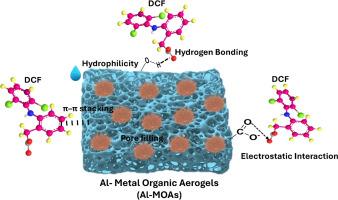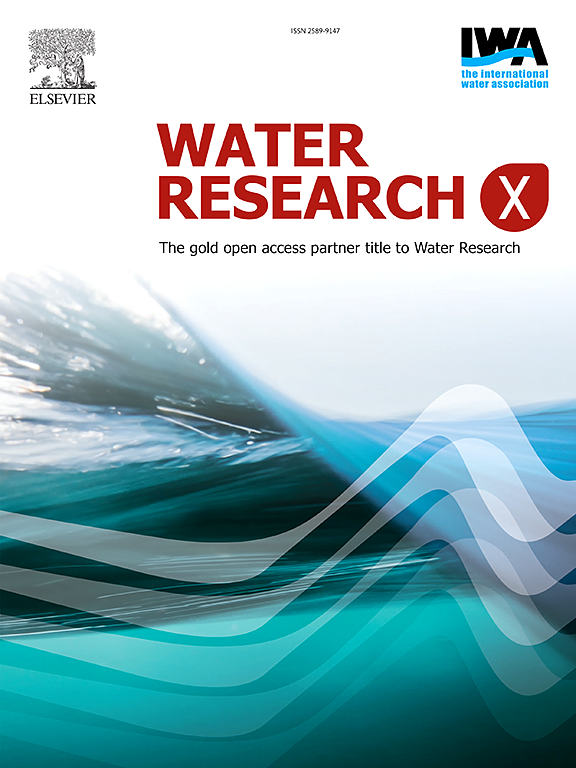Hierarchical ultra microporous aluminum based metal organic aerogels for water purification: Kinetic, isotherm, and regeneration insights into diclofenac adsorption
IF 8.2
2区 环境科学与生态学
Q1 ENGINEERING, ENVIRONMENTAL
引用次数: 0
Abstract
The widespread use of Diclofenac (DCF), a non-steroidal anti-inflammatory drug (NSAID) has resulted their persistent presence in aquatic environments which posing risks to both human health and ecosystems. In this study, we synthesized aluminum-based metal organic aerogels (Al-MOAs) through a Sol-gel method to explore the efficiency as adsorbents for DCF removal is aqueous solution. Al-MOAs exhibited a high microporosity, high specific surface area (1702.5 m2/g), and excellent mechanical stability confirmed by physicochemical characterization. Therefore, Al-MOAs revealed fast adsorption kinetics and achieved a maximum adsorption capacity of 416 mg/g at pH 3. The adsorption process was found to be spontaneous and exothermic with multiple interactions, including electrostatic forces, hydrogen bonding, and π-π stacking, contributing to the high removal efficiency as well. Furthermore, Al-MOAs demonstrated suitable stability and exhibiting outstanding reusability for at least four consecutive adsorption-desorption cycles during DCF removal process. Finally, Al-MOAs considered as a promising adsorbent for the efficient removal of pharmaceutical pollutant in liquid phase and a sustainable solution for wastewater treatment.

分级超微孔铝基金属有机气凝胶用于水净化:动力学,等温线和再生洞察双氯芬酸吸附
双氯芬酸(DCF)是一种非甾体抗炎药(NSAID),其广泛使用导致其在水生环境中持续存在,对人类健康和生态系统构成风险。本研究采用溶胶-凝胶法合成铝基金属有机气凝胶(Al-MOAs),探讨其作为吸附剂对水溶液中DCF的去除效果。理化表征表明,Al-MOAs具有高微孔率、高比表面积(1702.5 m2/g)和优异的机械稳定性。因此,Al-MOAs表现出快速的吸附动力学,在pH为3时的最大吸附量为416 mg/g。吸附过程是自发的、放热的,具有静电力、氢键和π-π堆积等多种相互作用,具有较高的去除效率。此外,在DCF去除过程中,Al-MOAs表现出良好的稳定性,并在至少四个连续的吸附-解吸循环中表现出出色的可重复使用性。最后,Al-MOAs被认为是一种有前途的高效去除液相中药物污染物的吸附剂和废水处理的可持续解决方案。
本文章由计算机程序翻译,如有差异,请以英文原文为准。
求助全文
约1分钟内获得全文
求助全文
来源期刊

Water Research X
Environmental Science-Water Science and Technology
CiteScore
12.30
自引率
1.30%
发文量
19
期刊介绍:
Water Research X is a sister journal of Water Research, which follows a Gold Open Access model. It focuses on publishing concise, letter-style research papers, visionary perspectives and editorials, as well as mini-reviews on emerging topics. The Journal invites contributions from researchers worldwide on various aspects of the science and technology related to the human impact on the water cycle, water quality, and its global management.
 求助内容:
求助内容: 应助结果提醒方式:
应助结果提醒方式:


